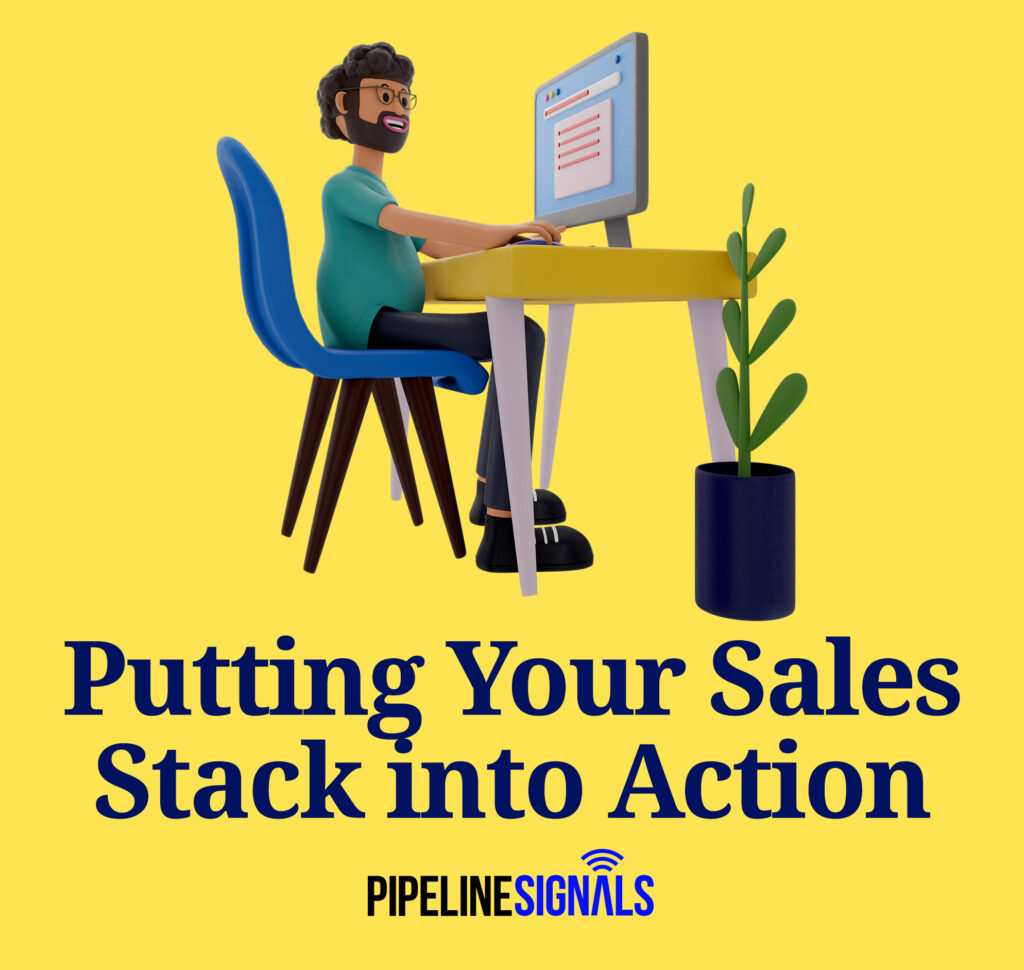I’m sure your sales team is doing a terrific job, but why stop there? How can you help streamline what they do and make it easier for them? Sales Stack Tools can help you and your sales team improve performance.
Most B2B Marketers will report that sales cycles are not what they used to be. More specifically, the average close rate has been dropping. However, sales deals are still being won and lost based on a company’s ability to execute a consistent sales process.
For example, if you have the lead, someone needs to qualify the lead, someone else needs to handle objections, another person needs to prepare the presentation, and finally, the final person on the team needs to close the deal. It is no secret that a well-defined sales process enables sales teams to close deals predictably. Each of these steps performing flawlessly is important for closing deals.
Remember: The best tools out there are meant to remove friction from the sales process.


Building a Sales Process around Your Tech Stack
I’m a believer in using the right tool for every single thing my team, and I do. However, this doesn’t mean that every tool is created equal. In many cases, the best approach for driving sales might not be to expand your current marketing stack. The critical question isn’t whether you need a new tool or strategy—it’s what problem you’re trying to solve.
Here are some tips on how to identify your sales process and build it around a well-defined sales stack:
- Define your Ideal Customer Profile
- Identify your most significant sources of leads and prospects
- Determine which prospecting methods work best for your team
- Identify common sales objections and understand the reasons they happen
- Understand your market’s ideal buying cycle, including when to best follow up on leads
- Have sales metrics available to you for more accessible analysis
- Determine which sales activities are most likely to close deals


Our Favorite Sales Tools for Prospecting and Lead Generation
You’ve got a killer team and spent the past few years refining the processes they follow to close deals. You’ve honed your sales process, and it’s working—but now you want to make sure that you’re putting your best foot forward in all the tools you use to do so.
We get it: Your team is excellent at what they do, and they have a process that works well for them. But what about those of us who aren’t as familiar with your business or industry? How can we be sure we’re using the right tools for the job?
That’s where your sales stack comes in. Your sales stack contains the tools that maximize your sales process and level up your team’s productivity in closing deals. It’s different for every company, but it should be adapted to the specific methods and procedures that your team already follows to close deals.
There are a million tools and CRMs available today. Here are just a few of our favorites, whether you’re a big or a small team.
LinkedIn Sales Navigator
Do you know what’s great about LinkedIn? It’s a tool that helps you connect with people and build relationships.
Do you know what’s even better about LinkedIn? It’s a tool that helps you connect with people and build relationships and gives you access to the world’s largest database of B2B leads.
No matter what industry you’re in and no matter whether you have an established sales team or are just starting, LinkedIn Sales Navigator can help improve your business.
If you think about it, the Sales Navigator is like a VIP club pass. You can also save time by being able to find relevant profiles quickly—and even filter them by industry or title.
Related:
- How to Get the Most Out of LinkedIn Sales Navigator
- How Can You Fully Utilize Your LinkedIn Sales Navigator Investment?
Google Sheets
You read that right. (Shoutout to any fellow spreadsheet enthusiasts out there!)
It’s a great way to get started on the right foot—and it doesn’t require additional software or resources. You can use Google Sheets as a CRM to keep track of all your leads, prospects, and customers. And you can also use it to store information about them: their contact info, interests, which deals have been submitted for approval, etc.
Once you’ve got this information in one place, you can easily update it whenever new information comes in. You don’t even have to do anything manually—you can set up automated actions that let you know when something happens with one of your contacts (like when they change jobs), so there’s no need to check back on what’s going on constantly.
Zoom
Do you know what’s better than a great team? A great team that can work together remotely!
As a sales manager, you know how important it is to have your team working together. But what if they don’t all work in the same office? How do you make sure they’re still working together and collaborating effectively?
It helps teams stay connected and feel like they’re working toward the same goal as their colleagues—even when they’re not physically together.
With Zoom, there are no more excuses for not being able to collaborate effectively with your remote colleagues. You’ll be able to see each other on screen, easily share documents, and even participate in virtual meetings from anywhere in the world!


Putting Your Sales Stack into Action
The sales process is never a one-size-fits-all. Each team has its own best practices, and each salesperson has its strengths and weaknesses. To maximize your team’s productivity in closing deals, you need to ensure that your sales stack is as good as possible.
Your sales stack includes tools that maximize your sales process, including CRM, marketing automation, lead generation, scoring, chatbots, and more. That stack should be adapted to the specific methods and processes that your team already follows to close deals.


